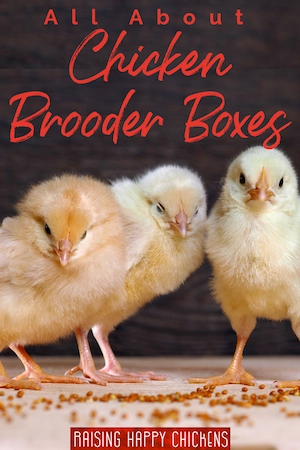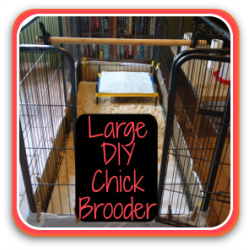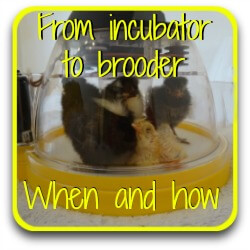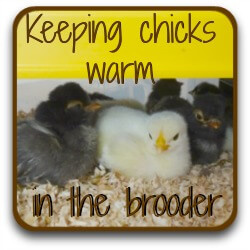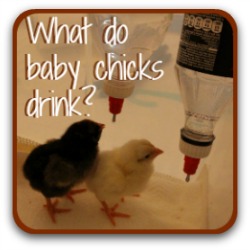- Home
- Brooder basics
- Basic brooder info
What is a chicken brooder?
When is a chick brooder required? How big should it be, what are its essential parts, and how long will chicks need to use it?
Whether you're incubating and hatching your own chicks or buying them from a breeder or hatchery, you'll need to set up a safe home for them before they arrive, to keep them healthy and happy.
This article, based on reliable sources as well as my own experience, considers the basic essentials of brooders for chicks.
How to use this article.
Use these links to jump to a section you particularly want to know about – or carry on reading for the full details.
What is a chicken brooder box?
- The meaning of "a brood" is simple: 'offspring', 'little ones' or 'children'.
- The noun "to brood" is also straightforward: to take care of, or to raise, offspring.
- In relation to a "broody hen" the meaning becomes more specific: to sit on and hatch eggs.
- When referring to "brooding" chicks, it means in general taking care of baby chickens while they're very young.
- So the meaning of a brooder box is simply a place where very young chickens can be safely cared for.
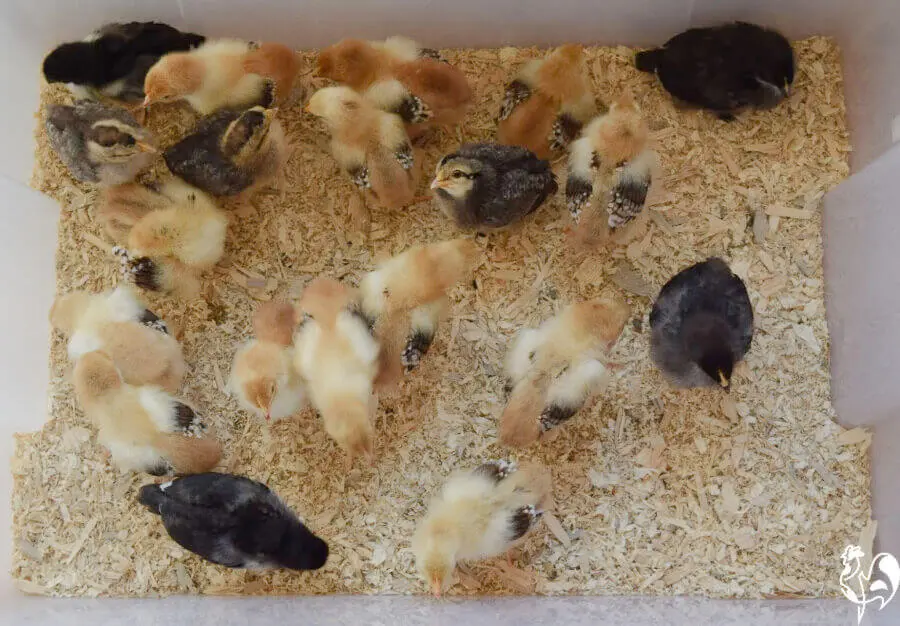 Some of my baby chicks in a tote box brooder.
Some of my baby chicks in a tote box brooder.- My own definition is: "A chicken brooder box is a place of safety where baby chicks are kept warm, fed, watered and cared for until they are able to fend for themselves".
- Or, if you like, a brooder is simply a house for chicks!

Brooders for chicks: when are they needed?
There's more information about when it's safe to move chicks from an incubator to the brooder, here.
It's important to have a brooder box ready for your chicks as soon as they hatch, if you're incubating your own, or from the moment they arrive if you're buying locally or having them sent from a hatchery.
Chicks aren't able to regulate their own temperature, or find their own food and drink.
So unless they're being looked after by a broody hen (in which case, of course, she will take care of everything!) we need to provide that warm environment for them.
As with most things chicken-related, you need to plan in advance. Making sure it's safe, warm, draught-free, the right size for the number of chicks and large enough to house them as they grow are all crucial elements to give baby chickens the best start in life.

How long do chicks stay in the brooder?
Baby chicks go into a brooder box as soon as they have dried out in the incubator, or as soon as you bring them home from the breeder or hatchery.
They will stay in a brooder until they are
- fully feathered and can regulate their own temperature
- large enough in size to join the main flock without being bullied to the point of injury.
Temperature: depending on the breed and time of year (the temperature outside should be consistently above 18ºC, 65ºF – below that and chicks will struggle to keep warm enough) that can be anything from six to twelve weeks post-hatch.
Size: it's crucial that they are able to stand up for themselves as a new pecking order is established within the flock. Introduce chicks too early and there's a real possibility that they'll be critically injured by the established adults.
If they're fully feathered, the weather is warm enough and they need to go outside but aren't yet large enough to withstand bullying, keep them in a separate pen, within sight and sound of the established flock, until they can hold their own.
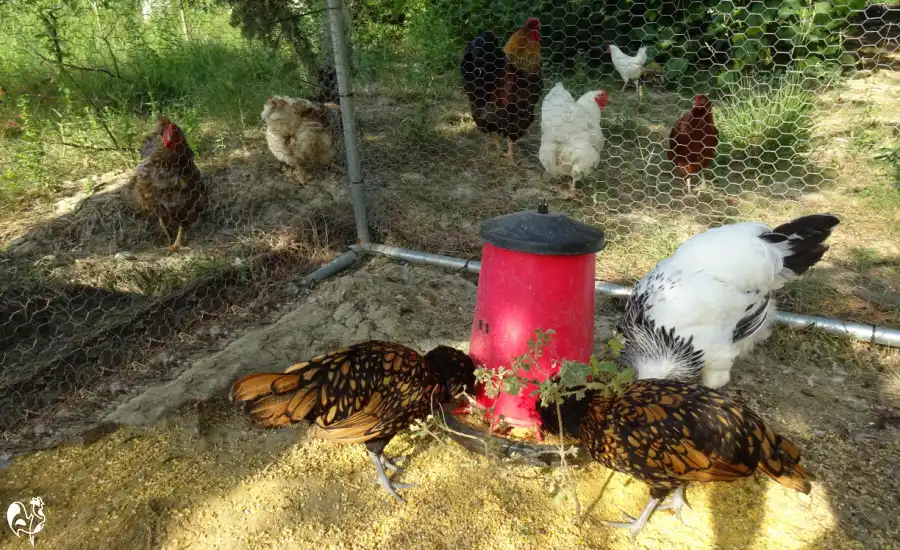 Some of my established flock visiting the younger newcomers, separated into two runs.
Some of my established flock visiting the younger newcomers, separated into two runs.
Brooder boxes for chickens: what size should they be?
There are all kinds of calculations – which vary wildly – about the space growing chicks need, and obviously this changes time to comfortably house the chicks as they grow.
Chicks grow amazingly quickly, so make sure you have enough space in the brooder, or plan to have different sized brooders over time.
Brooder size for chicks between 2 and 8 weeks post-hatch.
As a general rule of thumb, plan to allow at least...
- 0.5 square feet per chick from hatch up to two weeks of age
- 1.5 square foot per chick for baby chicks from two up to four weeks of age
- 2 square feet between four and eight weeks.
A large tote box is a good size for up to six chickens for their first two or three weeks. I call this a "Stage 1" brooder.
Depending on the breed size, you may have to move to a "Stage 2" brooder after that. Even that brooder is likely to need expanding at around four or five weeks as the chicks not only grow, but learn how to fly.
The best way of calculating the chicken brooder size is to watch your chicks' behaviour.
All chicks peck a little at first, as they explore their surroundings and their brothers and sisters, but if you see an increase in feather pecking and bullying, and the bedding is becoming dirty very quickly and / or has a strong smell of ammonia, it's time to increase the space.

What's a suitable place for the best chick brooder setup?
Bear in mind that chicks will start to explore their surroundings very quickly if they're allowed to. You'll find them flying out of the brooder by week 3 at the latest.
So either your container should by tall enough or have a top, or you have to accept that whichever room you place the brooder will end up looking (and smelling!) like my spare bathroom did when I once used it (never again!).
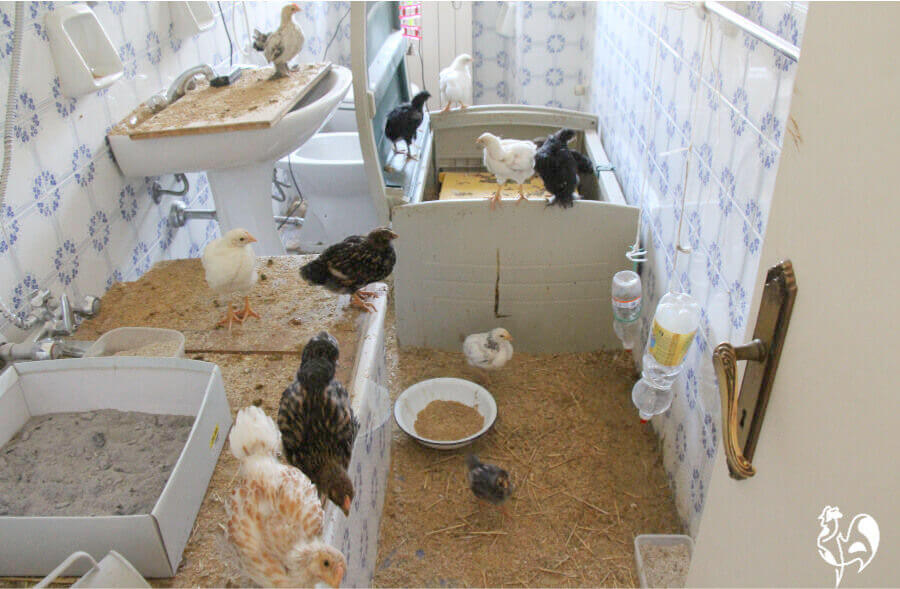
Whichever size you decide on and whatever you use, your container needs to be in a safe place. For the first few weeks your chicks are vulnerable and will need protecting from cold, draughts, disturbance and the over-enthusiasm of young children and pets.
Make sure you have a setting where :
- you can see the chicks easily so you're able to check for potential problems
- the room temperature is at least 10ºC (50ºF)
- it's not in direct sunlight and the temperature does not fluctuate wildly, or can be controlled to be fairly stable (for example with adequate ventilation in hot weather, or a radiator in cold)
- it won't get knocked over by enthusiastic children or pets – and pets, in particular cats, cannot reach inside to "play" with the babies
- you don't mind dust – chicks create a lot of it!
I use a spare bedroom with a tote box brooder for the first week, then move them into a large puppy pen brooder in my office or utility room until they're ready to go outside with the main flock.
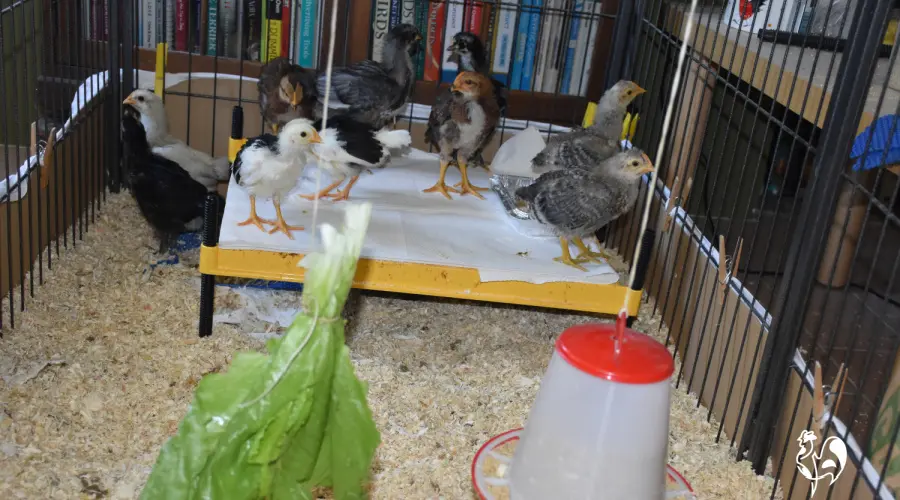 My puppy pen brooder.
My puppy pen brooder.
A DIY chicken brooder: how to make and set up your own.
Now you're clear about the basics of what a chicken brooder is, when it should be used, what size it should be and the best places to locate it, it's time to set yours up.
This article will guide you through the easiest and most effective way to create your own DIY chick brooder box.
From newly hatched chicks to adolescents ready for the world of the coop, it covers how to expand the size over time, the best bedding for each stage, and how to provide safe heat to keep the chicks warm.
This DIY brooder is inexpensive to design, and fun for the whole family to be involved in creating while you're waiting for those chicks to arrive!

Now you know what a chicken brooder box is, it's time to add essentials!

Sources.
1. Fairchild, B. D.: Environmental Factors to Control when Brooding Chicks. Pub. University of Georgia, Faculty of Poultry Science.
2. May, J. D., and B. D. Lott, 2001. Relating weight gain and feed: gain of male and female broilers to rearing temperature. Pub. Journal of Poultry Science, 2001.
3. Carlile, F. S.: Ammonia in poultry houses: a literature review. Pub. World's Poultry Science Journal, 1984.
4. Damerow, Gail: Hatching & Brooding Your Own Chicks. Pub. Storey, 2013.
- Home
- Brooder basics
- Basic brooder info
